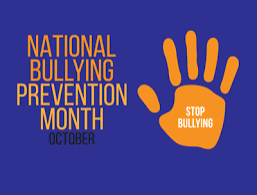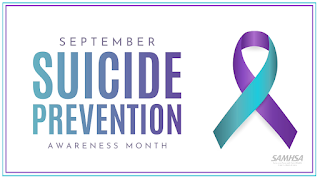October is National Bullying Prevention Month

October was first declared National Bullying Prevention Month in 2006 to prevent childhood bullying and promote kindness, acceptance, and inclusion. The US Department of Health and Human Services defines bullying as unwanted, aggressive behavior among school-aged children that involves a real or perceived power imbalance. The behavior is repeated or has the potential to be repeated, over time. Bullying can be verbal, social, physical, or cyber and can lead to school avoidance, loss of self-esteem, increased anxiety, and depression. The National Child Traumatic Stress Network reports that 1 in 5 high school students are bullied in the United States. The NCTSN also provides facts on the relationship between trauma and bullying indicating the importance of addressing both bullying and trauma. October 2, 2023, is World Day of Bullying Prevention! Stomp Out Bullying encourages us to join in solidarity to stop bullying and cyberbullying by wearing blue that day and throughout the mon

